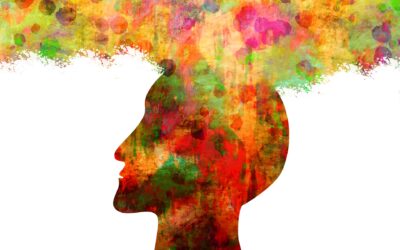Treating a Disease vs. Finding Happiness
Over the 16 years that I have worked at Logan River Academy, I have realized one common thread in our student body. Every student comes here feeling defeated, with the self-view that they are a failure. This feeling can manifest itself differently in each student. Some will present with defiant behavior, while others will be severely depressed or anxious. However, beneath those surface-level behaviors, they all feel like failures. What does this have to do with positive psychology?
The answer comes from an observation by the founder of the positive psychology movement himself, Martin Seligman. He stated, “I believe psychology has done very well in working out how to understand and treat disease. But I think that is literally half-baked. If all you do is work to fix problems, to alleviate suffering, then by definition, you are working to get people to zero, to neutral.”
What is Positive Psychology?
To understand this quote, you first have to have a basic understanding of what positive psychology is. In a nutshell, “positive psychology is the scientific study of what makes life most worth living.” Positive Psychology focuses on strengths rather than weaknesses and aims to lift people from a neutral mediocrity to a higher, more fulfilling state of living. It focuses on building the good in life rather than repairing the bad.
The quote above highlights that if we focus too much on treating the “disease” or problem and not enough on building the positive aspects of life, we end up with people who are not angry, sad, and irritable, but they are also not happy, proud, and fulfilled.
Now, this is the hard part. We have to find a balance between “fixing the problems” and developing the building blocks of an above-average, fulfilling life. In my experience, I have found that parents and therapists have an easier time recognizing the things that need to be fixed but struggle to see the positive. This is probably why conventional psychology focuses on “fixing the person” before looking at what truly leads to happiness.
Origins of PERMA Model
Martin Seligman talks about this in his book, ‘Learned Optimism‘, in which he describes his journey to uncover the common factors that are associated with those that are happy. He started his research by studying learned helplessness. Learned helplessness occurs when an individual is conditioned to believe that she cannot change or escape a negative situation. Seligman discovered that learned helplessness is closely associated with depression. He was surprised to find that, out of the hundreds of thousands of psychological studies, very few focused on happiness or what it takes to be happy. He took this massive undertaking upon himself, and through random control style studies, he came up with the following five elements of happiness and created the acronym PERMA.
P – Positive Emotions:
Fully experiencing positive emotions is an essential piece of the well-being puzzle. The degree to which we experience positive emotions seems like it would be a pretty obvious way to determine our level of happiness. However, many of us tend to focus on the negative, which can overshadow the positive aspects of our lives and become all-consuming. It then becomes vital to learn how to recognize positive emotions because as we do, we will start to develop a more positive self-image and a better outlook on life.
I have worked with several students who view the changes that they are making as positive, but I have also seen students view the changes they are making as negative (i.e., if they are conforming to what others want them to be and not what they want to be themselves). As you can imagine, those who hold a positive view of their changes have better outcomes. This positive view starts with experiencing positive emotions.
E – Engagement:
Being actively engaged in something we enjoy and excel at is another critical aspect of well-being. It’s hard to have a developed sense of well-being if you are not genuinely engaged in anything you do. Practicing mindfulness can help individuals more fully engage in their daily activities. Living in the moment and relishing everything about it will help you cultivate a more profound sense of engagement in life. They say that depression lives in the past, and anxiety lives in the future. We need to live and be engaged in the present to avoid these pitfalls.
R – (Positive) Relationships:
Humans are social creatures, and we rely on connections with others to truly flourish. Having deep, meaningful relationships with others is vital to our well-being. The key is to find “meaningful relationships.” Sometimes in our haste to fulfill this element of happiness, we fill it with the wrong people. Toxic relationships can have the opposite effect on our sense of well-being, and the line between a healthy relationship and an unhealthy relationship can often be blurry for involved individuals. Relationships in the PERMA model refer to being loved, supported, and valued by others. For many of the students I have worked with, we strive to build meaningful relationships by finding those with whom they share common goals and values and those they can trust with their vulnerabilities.
M – Meaning:
Even someone who may seem deliriously happy most of the time may not have a well-developed sense of well-being if they do not find meaning in their life. When we dedicate ourselves to a cause and become engaged in something bigger than ourselves, we experience a sense of purpose for which there is simply no replacement. Searching for meaning is the essence of adolescence. We often hear that adolescence is the search for identity. To help guide adolescents as they search for meaning, we, as therapists and parents, can help them identify and apply what they are good at to causes they feel passionately about. If they have trouble identifying what they are passionate about, encourage them to try new things and be creative to find what they connect with.
A – Accomplishment / Achievement:
It is tough to feel discouraged when we find success, achieve our goals, and actively strive to improve ourselves. Without a drive to accomplish and achieve, we are missing one of the puzzle pieces of authentic well-being (Seligman, 2011). I would make one addendum to this statement; it must be genuine accomplishment. In my experience, when students are given something they do not believe they deserve, the desired effect is not achieved. Actual achievement motivates us to do more and allows us to push through the tough times. It builds a sense of confidence and resilience that can act as a catalyst for self-improvement.
How To Apply PERMA
How do we develop these elements? There are several different ways to do so. Following are some of the more common methods:
- Look for the silver lining and avoid negative situations when possible. Where our mind is, we are also. One of the most common therapeutical techniques to help with this is keeping a gratitude journal.
- Practice mindfulness. Be present and engaged in whatever you are doing. As mentioned before, the more mindful we are, the less we focus on those things that can lead to anxiety and depression.
- Cut out negative relationships and focus on the positive ones instead. Auditing our relationships is easier said than done, but we must honestly evaluate our relationships to determine those that lead us to our goals and values or away.
- Set goals with purpose and do your best to achieve them. And if you fall short, don’t beat yourself up; cheer yourself on for trying. As cliche as it sounds, actual growth is in the journey, not the destination.
As I have practiced these principles in my life, I have found more fulfillment and purpose. As Logan River Academy students do this, I have also witnessed that they advance within the program quickly and have long-lasting success.









